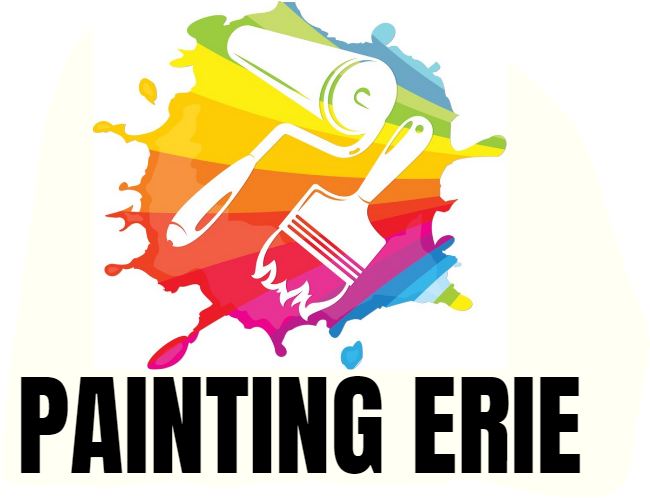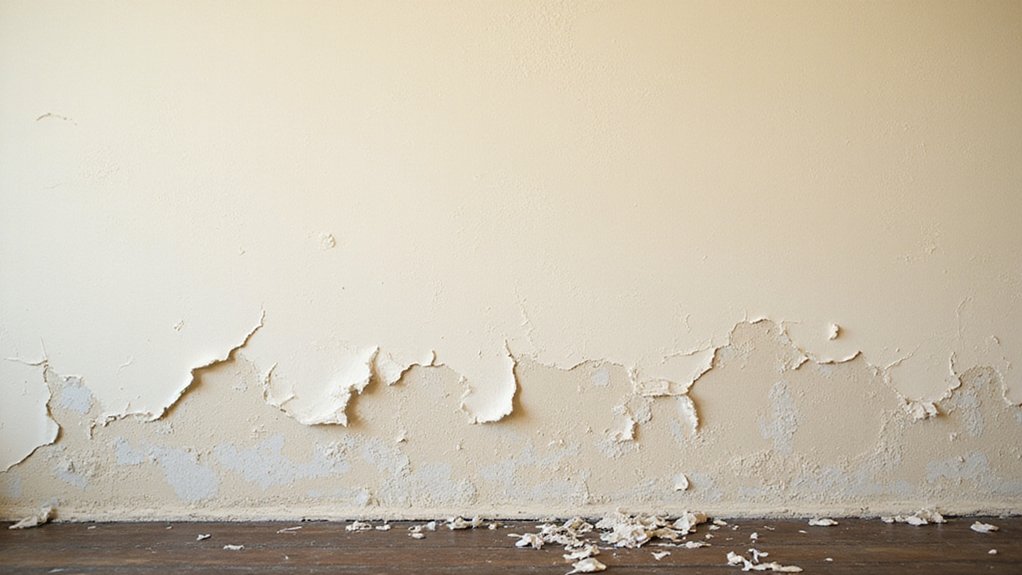You’ve invested time and money into a fresh coat of paint, but soon you’re faced with an all-too-familiar problem: peeling paint. It’s frustrating, to say the least. But before you can fix it, you need to understand why it’s happening in the first place. Is it inadequate surface preparation, poor paint adhesion, or something else entirely? The truth is, there are several culprits behind peeling paint, and identifying the root cause is key to preventing it from happening again.
Inadequate Surface Preparation
When you rush through surface preparation, you’re inviting peeling paint to ruin your finish. It’s a mistake that can lead to a world of trouble down the line.
Improper surface cleaning is a common culprit, leaving behind dirt, grime, and oils that prevent paint from bonding properly. Outdated surface coatings can also cause issues, as they may not be compatible with new paint.
If you don’t take the time to properly clean and prepare your surface, you’re setting yourself up for failure. Peeling paint is just the beginning – it can lead to water damage, structural issues, and a host of other problems.
Take the time to get it right, and you’ll be rewarded with a beautiful, long-lasting finish. Remember, surface preparation is the foundation of a successful paint job. Don’t skimp on it.
Neglecting proper preparation can also worsen existing issues like mold and mildew, which can discolor walls and harm the building’s structure.
Poor Paint Adhesion
Because paint is only as strong as its bond to the surface, poor adhesion is a recipe for disaster. You can’t simply slap a coat of paint onto a surface and expect it to last. The surface must be properly prepared, and the paint must be compatible with the surface material.
Oil-based paints, for example, don’t play well with latex-based paints. If you’re applying a latex-based paint over an oil-based one, you’re asking for trouble. The same goes for painting over a surface that’s been previously coated with a glossy or semi-gloss paint. You need to guarantee a strong bond between the old paint and the new coat. That means scuffing the surface, cleaning it thoroughly, and applying a primer specifically designed for the type of paint you’re using.
Anything less, and you’re courting disaster. So, take the time to get it right – your paint job will thank you. For professional help, consider hiring experts who ensure proper surface preparation before painting to avoid adhesion issues.
Moisture Damage and Water Infiltration
Moisture damage and water infiltration can silently sabotage your paint job, turning a beautiful finish into a peeling mess. You mightn’t even notice it’s happening until it’s too late.
When moisture seeps into your walls or ceiling, it can cause paint to peel and flake off. This can occur due to poor condensation control, inadequate vapor barrier installation, or even high humidity.
To prevent moisture damage, you need to identify and address the source of the issue. Check for any signs of water infiltration, such as stains or discoloration, and fix any leaks or cracks. Guarantee proper ventilation and install a vapor barrier to avert moisture buildup.
Using the Wrong Paint for the Job
The type of paint you choose can make all the difference in preventing peeling. You might be surprised to learn that incompatible paint types are a common culprit behind peeling paint. If you’ve ever applied a water-based paint over an oil-based one, you’ve created a recipe for disaster. The two simply don’t mix, and the resulting peeling is inevitable.
Improper paint application is another mistake that can lead to peeling. Failing to clean the surface, applying paint in extreme temperatures, or using the wrong roller or brush can all compromise the paint’s adhesion. To avoid these mistakes, take the time to research the best paint for your specific project. Read the labels, and make sure you’re using the right type of paint for the surface you’re working with. With the right paint and proper application, you’ll be well on your way to a durable, long-lasting finish.
Insufficient Primer or No Primer at All
If you’re applying paint directly to a surface without proper priming, you’re basically setting yourself up for failure. Without a primer, the paint can’t bond properly to the surface, leading to peeling and flaking. This is especially true when painting over a porous or uneven surface.
Some common mistakes that can lead to peeling paint include:
- Improper surface cleaning, allowing dirt and grime to interfere with paint adhesion
- Inadequate paint application, resulting in a thin or uneven coat
- Using a low-quality primer or no primer at all
- Failing to sand the surface to create a smooth finish
- Applying paint in thick, heavy coats that can’t dry properly
Temperature and Humidity Extremes
Painting in extreme temperatures or humidity levels can be a recipe for disaster, as it alters the paint’s ability to bond with the surface, leading to peeling and flaking. You might think you’re saving time by painting on a hot summer day or in a damp basement, but you’re actually setting yourself up for failure.
Daily temperature swings can cause the paint to expand and contract, weakening its adhesion to the surface. Similarly, uneven wall insulation can lead to moisture accumulation, creating an ideal environment for peeling paint.
To avoid these issues, make sure to paint within the recommended temperature range (usually between 60°F and 80°F) and maintain a consistent humidity level. If you’re unsure about the conditions, wait for a better day or take measures to regulate the environment. Your paint job will thank you.
Ignoring Signs of Wear and Tear
You’ve probably noticed how wear and tear on your walls can lead to a breakdown in the paint’s protective barrier, making it more susceptible to peeling. When you ignore these signs, you’re fundamentally inviting peeling paint into your home.
Cracks in the walls or ceiling, which can indicate structural issues
Water stains or discoloration, which can be a sign of moisture seepage
Faded or chalking paint, which can indicate UV damage
Improper cleaning methods, which can strip the paint of its protective wax
Musty odors or mildew, which can indicate high humidity levels
Frequently Asked Questions
Can I Fix Peeling Paint Without Repainting the Entire Surface?
You can fix peeling paint without repainting the entire surface by using spot paint repair techniques, applying a paint adhesion primer to the affected area, and then touching up with a matching paint color.
How Long Does It Take for Peeling Paint to Spread?
You’ll notice peeling paint spreading at a varying rate, depending on factors like humidity, temperature, and surface preparation. Typically, it’ll follow a circular spread pattern, with peeling areas merging to form larger blisters, and can advance rapidly if left unaddressed.
Can I Prevent Peeling Paint With a Special Additive?
You can prevent peeling paint by incorporating specialized additives, such as paint primer additives, into your coating. Additionally, applying a liquid sealant coating can provide an extra layer of protection, ensuring a strong bond between the paint and surface.
Will Peeling Paint Affect the Structural Integrity of My Home?
You’re right to worry about peeling paint’s impact on your home’s structural integrity. If left unchecked, underlying moisture issues can compromise insulation quality, leading to energy efficiency issues and potentially even more severe problems down the line.
Can I Paint Over Peeling Paint Without Fixing the Underlying Issue?
You shouldn’t paint over peeling paint without addressing the underlying issue; it’s a temporary fix. Instead, scrape the surface clean, guarantee proper surface preparation, and select the right paint for a durable, long-lasting finish that won’t peel again soon.

